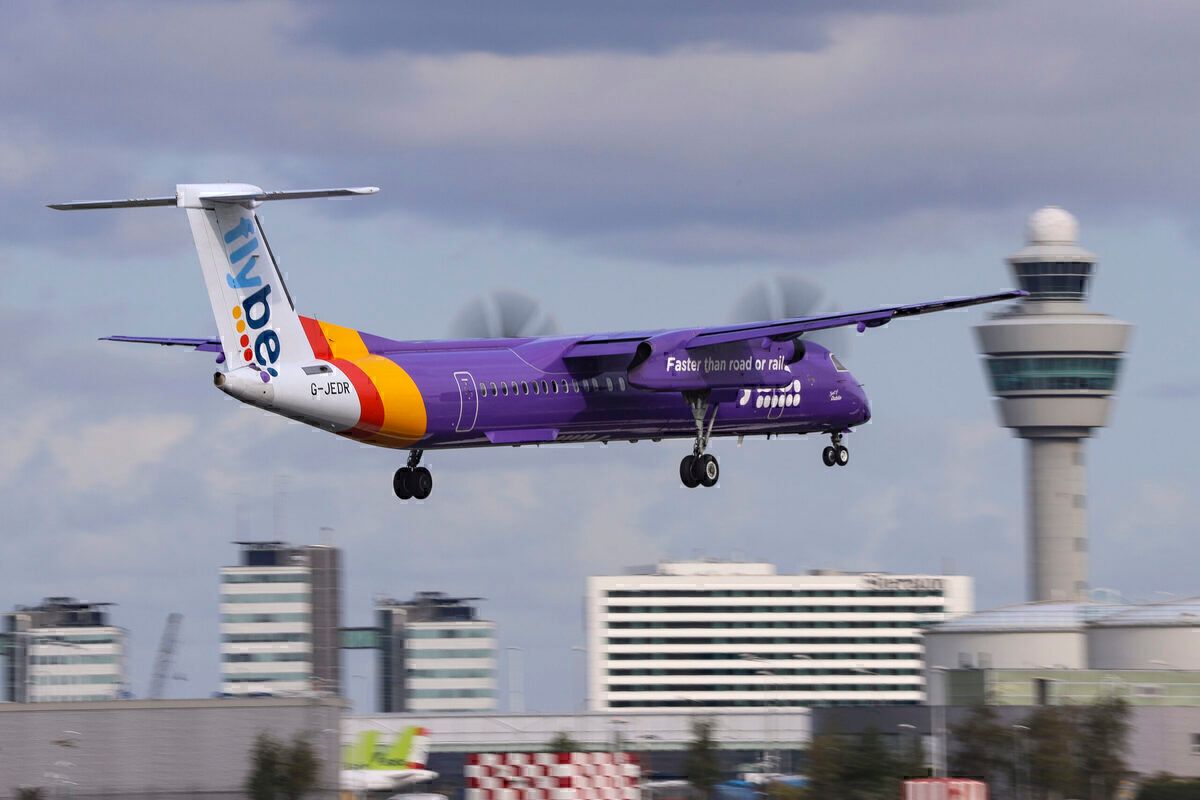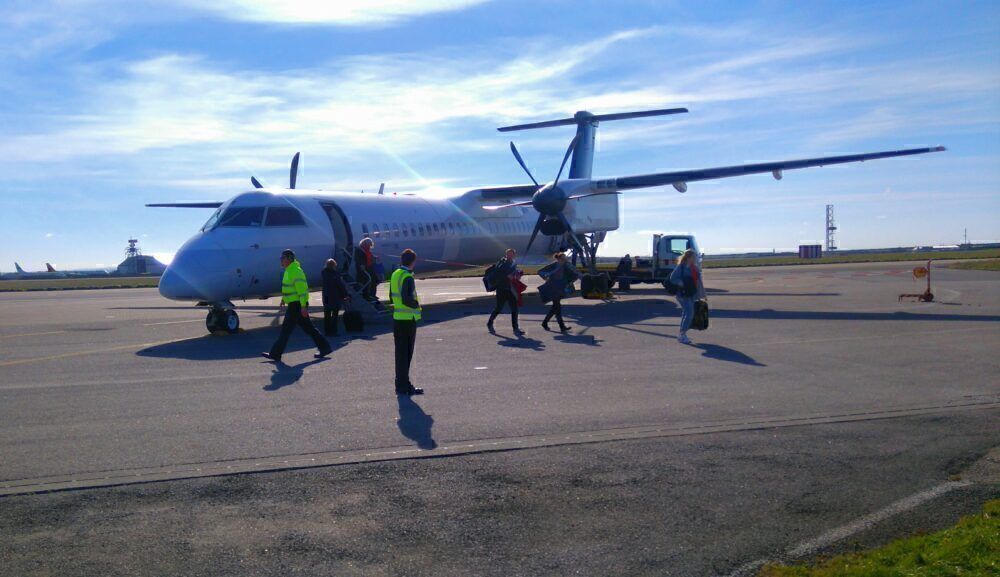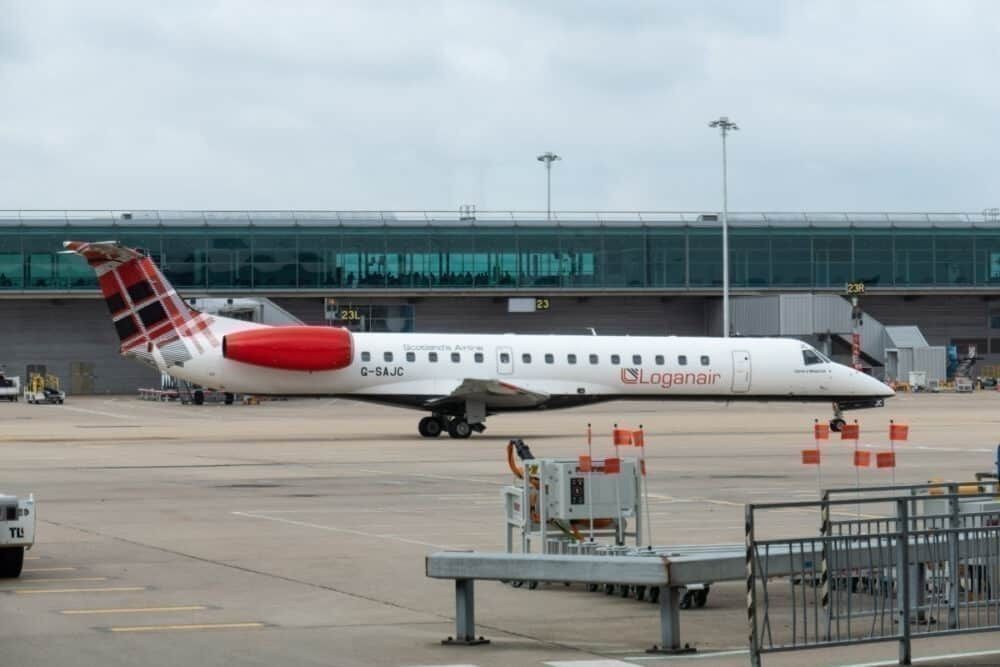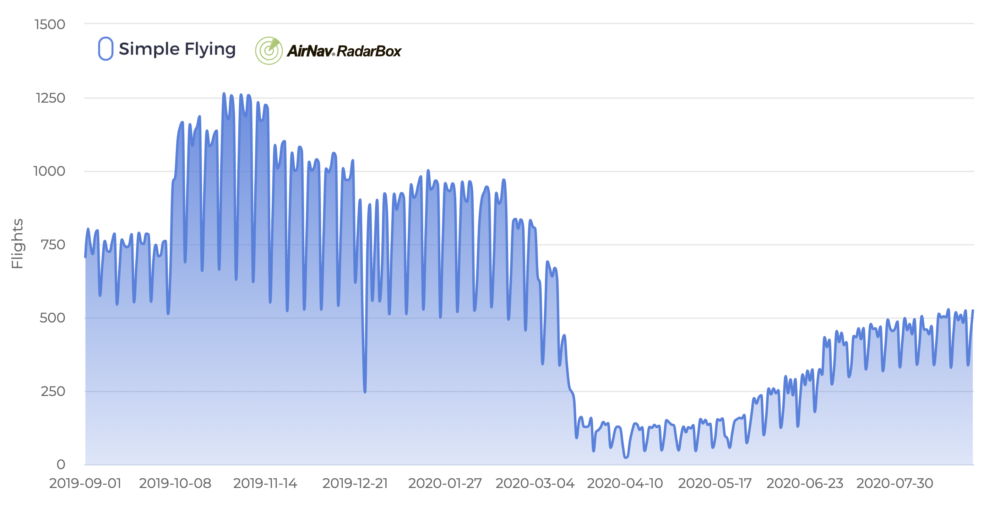Earlier this week, UK aviation reached a sad anniversary. March 5th, 2021 marked one year since the collapse of Exeter-based regional airline Flybe. With the ongoing coronavirus pandemic having forced the UK's first national lockdown later in March 2020, the first year without Flybe has seen far from normal operating conditions. Nonetheless, let's look at some of how its unfortunate absence has affected UK aviation.
Opportunities for other regional carriers
Before its collapse, Flybe had operated a diverse point-to-point network. Rather than taking a London-centric approach, it based its aircraft at many of the UK's other airports. Alongside its HQ in Exeter, its largest hubs were Birmingham and Manchester.
This model offered fantastic connectivity on cross-country routes where road and rail were impractical. This is exemplified by a one-hour Flybe service I once took from Leeds-Bradford to Newquay with Flybe. With flag carrier British Airways, this West Yorkshire-Cornwall trip would have required a change at London Heathrow. Meanwhile, it would have been a six-hour journey by road, or eight hours by rail. Flybe's point-to-point network brought the UK closer together.
Stay informed: Sign up for our daily and weekly aviation news digests!
As such, when the airline folded, there were a lot of routes that needed filling, and quickly. This allowed other UK-based regional carriers to expand their existing networks by taking on Flybe's old services. For example, Glasgow-based Loganair launched nearly 400 new weekly flights after the collapse, replacing 16 of the lost services. Similarly, Blue Islands, which was once a Flybe franchise, launched five new routes in the wake of its demise.
Impacts on aircraft and airports
With so many focus cities, airport operations across the UK also changed drastically at many of the country's regional airports after Flybe's collapse. For example, the airline was said to have operated 95% of flights in and out of Southampton airport before it folded. Thankfully, a lot of these have since been picked up by the aforementioned airlines, among others.
The reliance of such airports on Flybe's heavy presence led to job losses in the wake of its collapse. For example, around 150 staff were temporarily laid off at George Best Belfast City Airport, where Flybe had operated 80% of all flights.
Flybe going under also changed European fleet trends. At the time of its collapse, Flybe had operated around 10% of the global De Havilland Dash 8 fleet. This meant that an even greater proportion of these turboprops were wiped off the map in terms of the type's European fleet when the airline folded. This, along with coronavirus-related travel restrictions, saw the number of Dash 8 flights plummet, as seen on the graph below.
Community impact outside aviation
It is also worth briefly touching on the impact of Flybe's collapse beyond the sphere of aviation. The carrier maintained strong ties with local communities in its UK hubs and focus cities, which were lost after it went under. An example of this is its sponsorship of local sports teams. In years gone by, it had sponsored the following English and Scottish football clubs.
- Birmingham City, 2003-2007.
- Norwich City, 2006-2008.
- Southampton, 2006-2010.
- Inverness Caledonian Thistle, 2007-2010.
At the time of its collapse, Flybe's sponsorship was concentrated on its home city of Exeter. The airline had sponsored Exeter City Football Club since 2003. According to the BBC, this had been one of the longest-running deals in English football.
Flybe's collapse forced City to source a new sponsor, although their shirts may yet bear the Flybe logo once again, as, this January, a second incarnation of the airline registered its first aircraft. There is a long way to go before such an airline can make its return, but perhaps we will be able to look forward to 'Flybe Mark Two' gracing the UK's skies in the not-too-distant future.
Did Flybe's collapse alter your own personal travel habits? What are your memories of flying with the airline? Let us know your thoughts and experiences in the comments.





